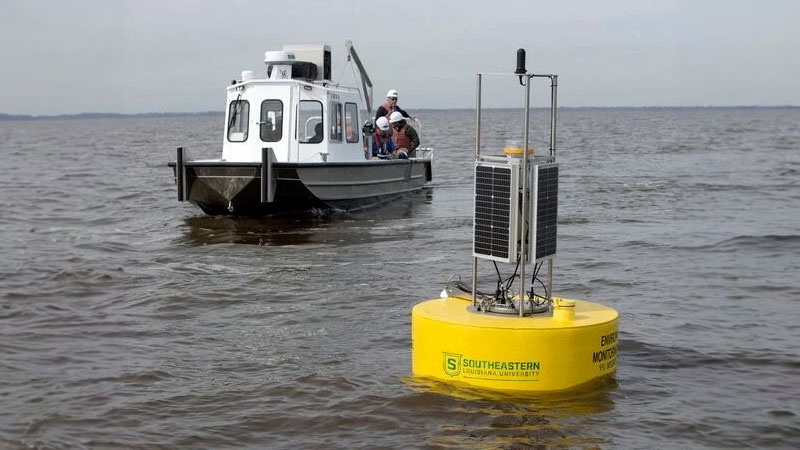Exclusive content

In a proactive move to safeguard the environmental integrity of Lake Maurepas, Southeastern Louisiana University in the United States has commenced the deployment of four buoys dedicated to scientific monitoring. This endeavor is part of an overarching Memorandum of Understanding (MOU) involving the Federal Government and Air Products, in collaboration with the Louisiana Clean Energy Complex project.
Baseline Data Collection for Future Carbon Sequestration Projects
The deployment of these buoys marks the beginning of independent scientific monitoring aimed at gathering baseline data within the Lake Maurepas ecosystem. This proactive approach precedes any potential future carbon sequestration projects in the area. By establishing comprehensive baseline data, Southeastern aims to understand the existing state of the aquatic and wetland realms to effectively assess any future environmental impacts.
Southeastern’s commitment extends to extensive environmental monitoring of the Lake Maurepas region. This initiative aims to ensure that any potential impacts stemming from future projects can be thoroughly understood and appropriately mitigated. Furthermore, all gathered data will be made publicly available, fostering transparency and accountability.
Monitoring Parameters and Buoy Deployment
The monitoring efforts will encompass a wide array of parameters crucial to understanding ecosystem health. Specifically, scientists from Southeastern will focus on monitoring marine life populations, including shrimp, fishes, and crabs, as well as the surrounding wetland plant life. Additionally, variations in water quality will be closely observed.
Named the Blind, Amite, Tickfaw, and Maurepas buoys, these YSI Bay Buoys are strategically positioned across the lake. Outfitted with sophisticated sensors, these buoys will continuously monitor key water parameters such as dissolved oxygen, pH, water temperature, and carbon dioxide levels. Moreover, one of the buoys will be equipped with a weather station to measure atmospheric parameters, including wind speed, air temperature, relative humidity, barometric pressure, and precipitation.